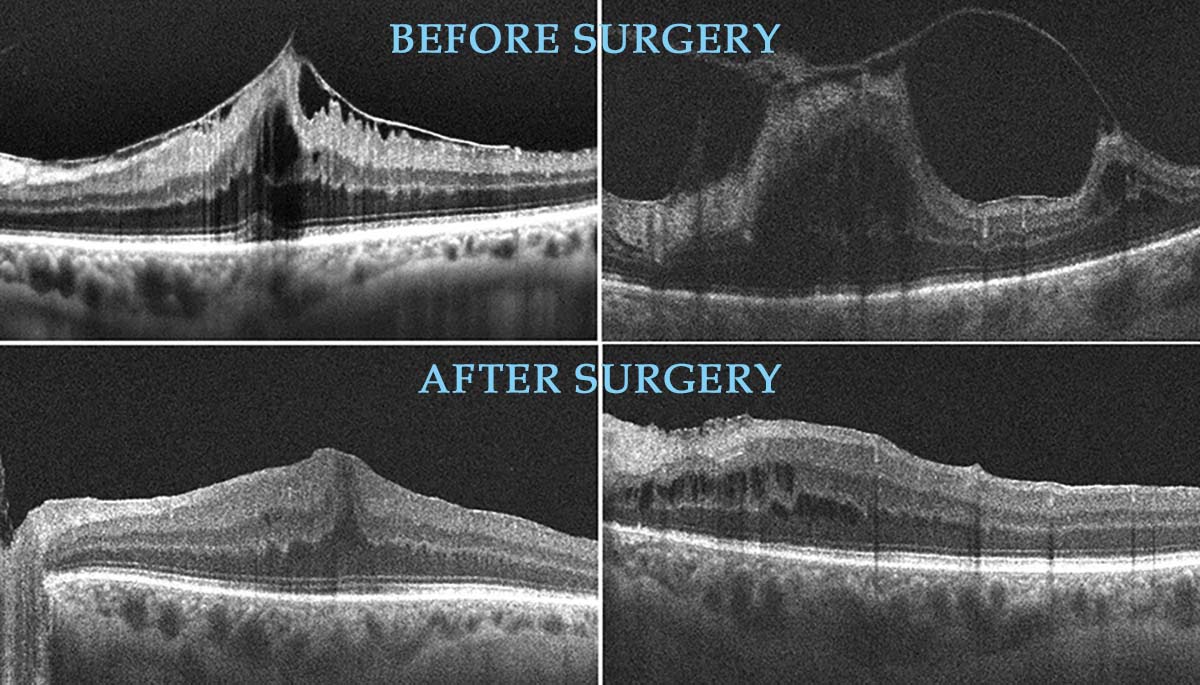When the vitreous partially adheres to the macula, it pulls away, causing shrinkage and termed as vitreomacular traction. This syndrome involves the deterioration of the macular structure as the vitreous separates from the retina, leading to visual impairment at the vitreoretinal interface. The vitreous begins detaching from the retina but remains connected to the macula, the central area of clear vision. This separation process progressively lifts the attached macula, damaging its structure and causing the death of photoreceptor cells crucial for vision.
Vitreomacular traction syndrome, occurring alongside retinal diseases like epiretinal membrane, macular degeneration, diabetic retinopathy, macular edema, and macular hole, is another retinal condition. This association emphasizes the complexity of retinal disorders and underscores the need for comprehensive diagnosis and tailored management strategies to address individual patient needs.
What are the Stages of Vithromacular Traction Syndrome?
Vitreomacular traction syndrome progresses through distinct stages, with the initial phase known as vitreomacular adhesion. During this stage, the vitreous has begun to detach from the macula but remains partially attached to it. Unlike in later stages of vitreomacular traction, there is no significant pulling force exerted on the macula during vitreomacular adhesion.
Symptoms of Vitreomacular Traction Syndrome?
Vitreomacular traction syndrome typically manifests with symptoms such as decreased vision, fragmented vision, and the development of blind spots. These symptoms are commonly observed in older individuals.
Diagnosis of Vitreomacular Traction Syndrome
Diagnosis of Vitreomacular Traction Syndrome (VMT) involves assessing vision, administering pupil-dilating drops, and conducting a fundus examination. Optical coherence tomography (OCT) is essential for confirming the diagnosis.
Treatment of Vitreomacular Traction Syndrome
Vitreomacular Traction Syndrome is typically treated by performing vitrectomy surgery to separate the adhesions between the vitreous and the macula. Additionally, if there is an accompanying epiretinal membrane (ERM), ERM peeling may also be necessary.

Treatment of Vitreomacular Traction Syndrome
Vitreomacular Traction Syndrome is typically treated by performing vitrectomy surgery to separate the adhesions between the vitreous and the macula. Additionally, if there is an accompanying epiretinal membrane (ERM), ERM peeling may also be necessary.









